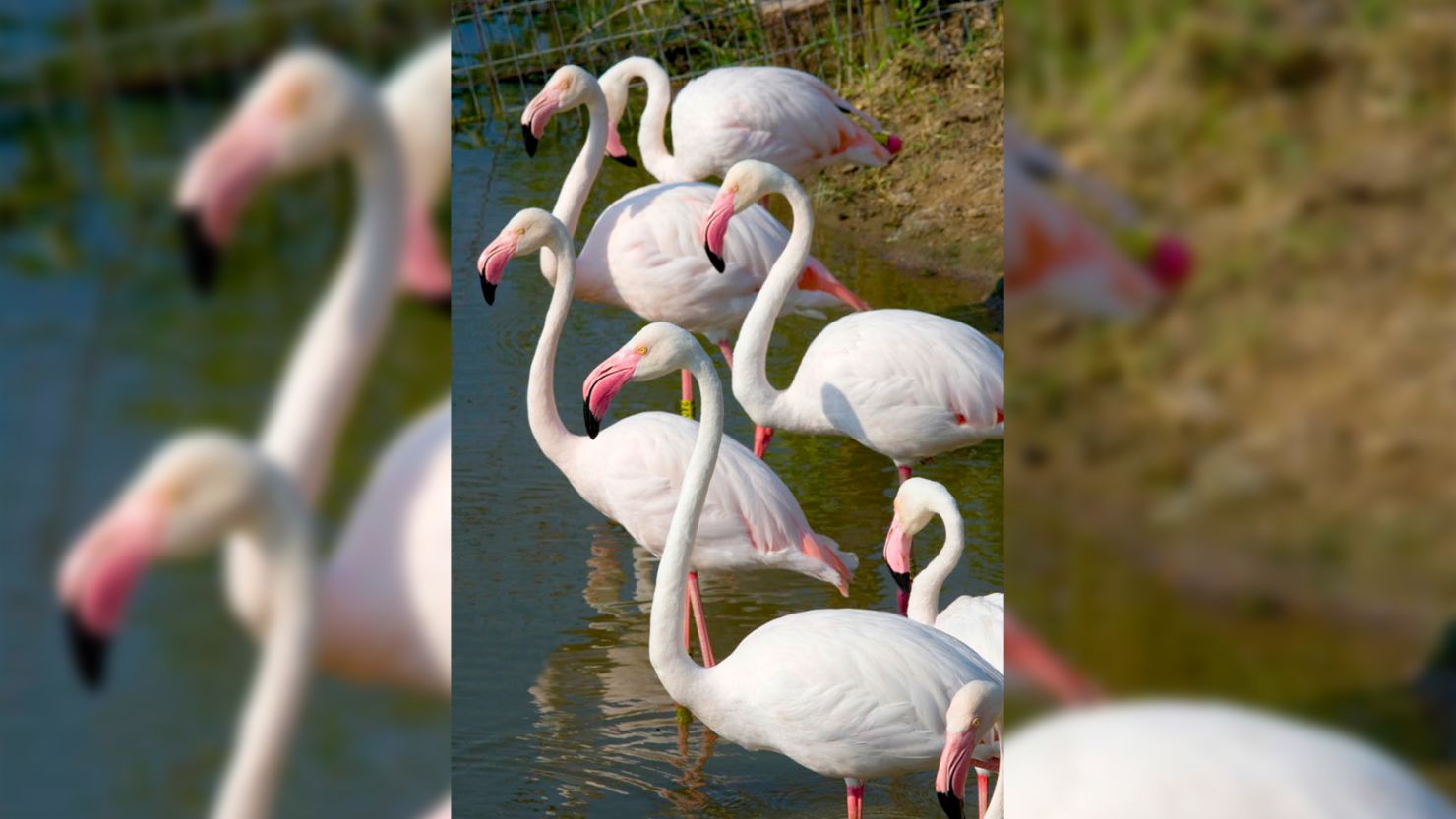On a stormy Independence Day in Wichita, Kansas, in 2005, flamingo No. 492 went rogue. The bird was spotted around 600 miles away Monday – nearly 17 years later – by fishing guide and angler David Foreman, according to the Texas Parks & Wildlife department.
One of 40 flamingos brought from Tanzania, Africa, to Kansas’ Sedgwick County Zoo in 2003, No. 492 arrived when it was 2 or 3 years old, according to Jennica King and Anne Heitman, the zoo’s director of strategic communications and curator of birds, respectively.
A couple of years later, on July 2, zookeepers went to clip the flamingos’ feathers, a “completely painless” process that’s similar to humans getting a haircut, Heitman said. During that process, a “big gust of wind came up,” and several birds that hadn’t yet had their feathers clipped were able to fly away, King said.
Birds replace their feathers anywhere from twice per year to every one or two years during a cycle called molting, and keepers cut the new feathers once they’re done growing, Heitman said. Feather clipping is a common and temporary form of flight restriction used not only by zoos, but also people who have pet birds and don’t want the birds to have their full flight potential.
Most of the birds circled the zoo, then returned. But two – No. 492 and its companion, No. 347 – did not. They ended up in a grassy, marshy flood drainage area about 100 or 200 yards away from the zoo. The two flamingos spent a couple of days there, dodging and fleeing from zookeepers who frantically tried to get close enough to retrieve them.
A big thunderstorm hit July 4, sending the two determined flamingos on their way for good. No. 347 went north and was spotted once in Minnesota, then never again, King said.
But the South is where No. 492 has seemed to find its home, as it has been spotted every year for the past five years on the Gulf Coast of Texas, said Julie Hagan, social media specialist for the coastal fisheries division of Texas Parks & Wildlife. The department has nicknamed No. 492 “Pink Floyd.”
In the video Foreman shared with the Texas department, Pink Floyd’s identifiable yellow band with “492” printed on it isn’t visible, Hagan said. But Pink Floyd is the only flamingo the department or fishers have seen for several consecutive springs, so they’re confident the flamingo spotted Monday is No. 492 – especially since flamingos aren’t native to North America.
In Northern Africa, flamingos of Pink Floyd’s type – “greater flamingos” – live on salt lakes, so the salt water and mild climate of the sunny Gulf Coast are perfect for him, King and Heitman said.
And “there’s plenty of food for him to eat there,” King added. Greater flamingos are filter feeders, sifting small plants, including tiny plankton and algae, and little animals – such as brine shrimp – out of the water. Brine shrimp are what gives flamingos their pink color.
“We believe he actually moves around and follows food sources, which is why No. 492 is only sighted occasionally,” Heitman said. “As the food sources ebb and flow, (flamingos) follow them around. So he’s probably traveling to other regions, just where people aren’t probably seeing him. But he should be able to find the types of foods that he needs down there.”
‘People are his biggest threat’
Sedgwick County Zoo has taken the adage “If you love it, let it go” to heart. “Once it flew away and was spotted in Texas, we were certainly happy to hear that it was OK,” King said. “Every time we hear of it being spotted every couple of years, we’re still pleased that he’s doing well.”
“We decided very early on, once he flew down to Texas, that we would not make any efforts that could potentially harm him or harm the wildlife around him,” King added. “His presence down there is not hurting the ecosystem or anything, and he’s not a nuisance. Flamingos are very non-aggressive birds.”
Flamingos in the wild can live up to 40 years old, while flamingos under human care can live much longer. The oldest flamingo the Sedgwick County Zoo has had lived to age 60.
Only about 20 years old, Pink Floyd has many years ahead of him, King said. Besides any potential severe storms, “really the only threats to him down there would be humans, if people try to get too close, try to capture him or harm him in some way,” she added.
If you see Pink Floyd, you can look and take photos, but keep your distance, King and Heitman said.
“We don’t want him feeling threatened and to end up harming himself or certainly have someone else harm him,” King added.




